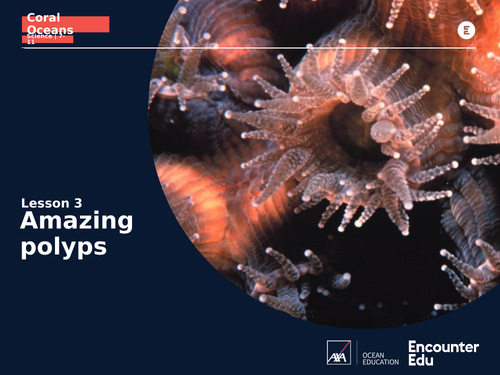




The Great Barrier Reef stretches for over 2,300 kilometres along the eastern coast of Australia, but the creatures that have created this habitat can measure just a few millimetres across.
This lesson covers the basic anatomy of the coral polyp, their life cycle and reproductive processes, and finishes with a game that shows how tropical coral polyps get their energy boost to create such amazing structures.
This is a single lesson from the unit Coral Oceans 7-11. This science-based unit uses the stunning imagery and 360 media from the XL Catlin Seaview Survey and covers several of the main concepts for students studying living things at upper elementary level.
The unit can be used as a standalone primer for students, using a new and exciting context of corals, clownfish and sharks, or as a comparative study to the local environment.
Students work through a series of connected lessons to develop their understanding of:
- habitats and how they provide the basic needs of plants and animals
- identification, classification and the use of keys
- life cycles, anatomy and sexual reproduction
- how animals obtain their food using the idea of food chains
- how animals and plants are adapted to their environment
- human impact on the environment
Access the full unit’s resources here: https://encounteredu.com/teachers/units/coral-oceans-science-7-11
Something went wrong, please try again later.
This resource hasn't been reviewed yet
To ensure quality for our reviews, only customers who have downloaded this resource can review it
Report this resourceto let us know if it violates our terms and conditions.
Our customer service team will review your report and will be in touch.
